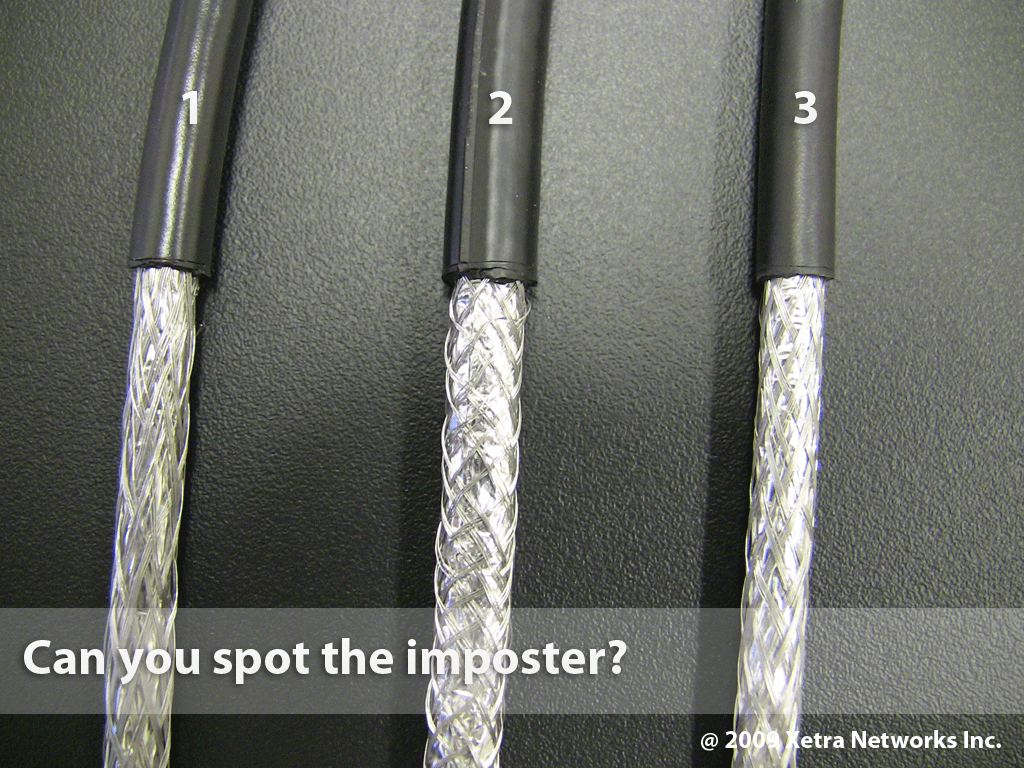
We all know that a structured cabling system is the most vital part of a network infrastructure. It is important to realize however, that saving a few bucks by selecting a second-rate cable or manufacturer is a commonly made mistake during network construction. While some cable manufacturers may offer what seems to be the same cable for half the price, remember that old saying: if something seems too good to be true, it probably is. If you are being offered the same category and length of cable for half of what you usually pay, logic alone should tell you that the quality has to differ just as much as the price does. By that same token, just because a cable is more expensive doesn’t necessarily mean that it is of better quality. It is important to understand the difference between overpaying for a cable and underpaying for a cable that has the bare bones minimum requirements (if that) to meet compliance standards. Quite possibly it will end up costing you more in the long run should you encounter problems with the cable. Times are tough, and it’s no secret that we are all looking to save money, it is essential however, to consider the total cost of ownership rather than just initial installation cost when it’s time to choose a cable manufacturer.
Total cost of ownership includes:
Even if it means spending a little more at the initial time of purchase, in the long run you will be saving yourself time, money, and the headache of dealing with bad cables. Without a warranty, and a reliable manufacturer to turn to, all the repair and replacement costs are left for you to pay for. The cost of tearing out and replacing bad cables far surpasses the cost of initially buying quality cables , and the savings gained by purchasing inferior cable will obviously be lost should you have to replace them. Don’t let yourself fall victim to a second rate cable. Look for a manufacturer that meets your budget and has positive feedback from other customers and installers. Don’t allow one of the lesser known online stores and manufacturers dupe you into buying low quality cable with their desirably below average prices.
Select a manufacturer that has:
Where does such awful cable originate?
Cheap, low quality cable is the result of a few contributing factors. First, the cost of materials has been on an incline over the past few years. Some shady manufacturers have used this as an excuse to skimp on copper usage during the manufacturing process. Cutting corners and using less copper has resulted in incorrect cable construction. There have also been reports of some manufacturers using materials other than copper as a cheaper alternative, such as steel or aluminum clad in copper. These factors can all result in a cable that is more prone failure even though it may look exactly the same. Some manufacturers will even forge a compliance stamp, category rating, and even fire rating onto the cable without actually meeting the compliance standards for that specific type of cable. Considering that more people are killed in fires by smoke inhalation rather than the fire itself, can you imagine the legal ramifications and risk to human life of a raging fire burning fake plenum rated cable and pumping toxic fumes throughout an office building?
What to Do
Do your research, and keep in mind that the cable that you buy is a long term investment that should be carefully selected.
Take a look at the cables below, can you see which cable is the imposter?
These are three different RG6 Coaxial Cables typically used in CCTV and residential video distribution. Two of them are from reputable cable manufactures and one is from a overseas manufacturer. While at first glance they may look the same, cables #1 & #3 are high quality cables with plentiful and tightly wound shielding members and larger cores. In contrast, the shielding on the overseas cable #2 is thin and used sparingly and feels like exactly what it is, substandard cable. The cable also lacks any marking denoting listing status or class type. In all likelihood, the cable never underwent any type of testing or certification for adherence to any performance or safety standards.
© 2017 IRONcladCE ALL Rights Reserved. Privacy Policy | Terms of Service | Sitemap